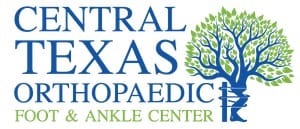Common Diagnoses:
Os Peroneum Syndrome
Os Peroneum Syndrome Overview
Os Peroneum Syndrome (sometimes termed painful os peroneum syndrome (POPS)) refers to a wide spectrum of conditions associated with an os peroneum at the lateral aspect of the foot. It can result in tenosynovitis and/or discontinuity of the peroneus longus tendon.
It can include one of more of the following:
- acute os peroneum fracture or diastasis of a multipartite os peroneum
- chronic (healing or healed) os peroneum fracture or diastasis of a multipartite os peroneum with callus formation which can result in stenosing peroneus longus tenosynovitis
- attrition or partial rupture of the peroneus longus tendon, proximal or distal to the os peroneum
- frank rupture of the peroneus longus tendon with discontinuity proximal or distal to the os peroneum
- presence of a large peroneal tubercle on the lateral aspect of the calcaneus which entraps the peroneus longus tendon and/or the os peroneum during tendon excursion.
Os Peroneum Syndrome Symptoms
Swelling over the cuboid
Pain over the cuboid during palpation.
Pain exacerbated by plantar flexion of 1st ray and heel elevation stage during gait
Os Peroneum Syndrome Diagnosis
X-RAYS:
• Best visualized on oblique view
• Contralateral foot X-Ray can help differentiate between bipartite normal variant and acute fracture
• Acute fracture – non sclerotic and jagged edges
• Bipartite normal variant – sclerotic and rounded edges
• Diastasis greater than 5mm indicates fracture
• Displacement of the os peroneum is an indirect sign of a peroneal tendon rupture and MRI should be ordered MRI:
• Increased intrasubstantial signal within the peroneus longus tendon, typically close to the cuboid
• Acute fracture or os peroneum or rupture of peroneus longus can be identified
Os Peroneum Syndrome Treatment
Conservative
• Initial treatment for minimally displaced fracture or painful os perineum include : Immobilization, Restricted weightbearing, Rest, NSAIDS
Surgical
• After failure of conservative care, simple excision is advised for painful os peroneum if minimal tendon involvement is identified
• Primary repair was preferred if at least 50% of the tendon remained after debridement, and tendon transfer if <50% of the tendon remained after debridement.
